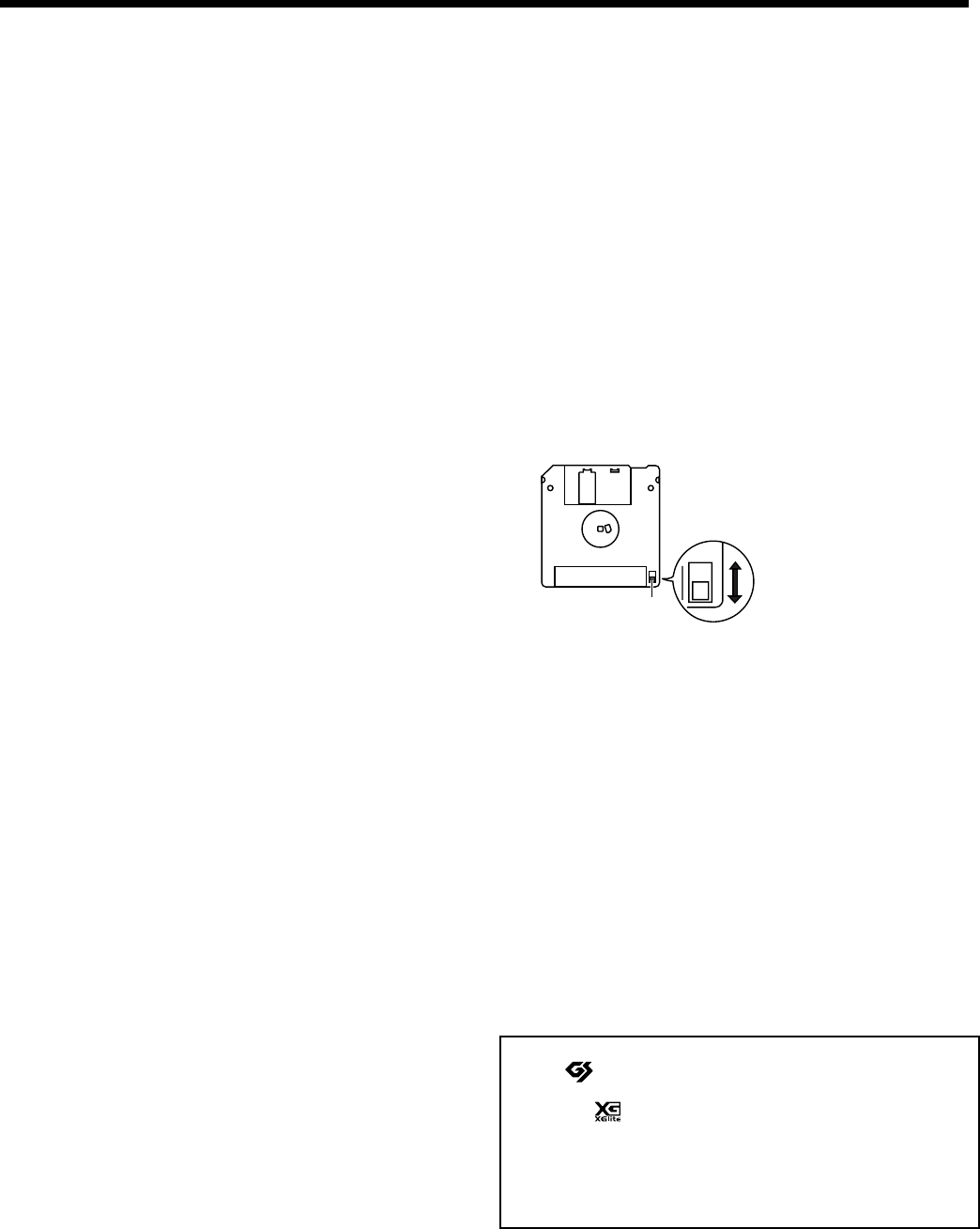
6
IMPORTANT NOTES
562
• Use a cable from Roland to make the connection. If using
some other make of connection cable, please note the
following precautions.
• Some connection cables contain resistors. Do not use
cables that incorporate resistors for connecting to this
unit. The use of such cables can cause the sound level
to be extremely low, or impossible to hear. For infor-
mation on cable specifications, contact the manufac-
turer of the cable.
565
• Before opening or closing the keyboard lid, always make sure
that no pets or other small animals are located on top of the
instrument (in particular, they should be kept away from the
keyboard and its lid). Otherwise, due to the structural design
of this instrument, small pets or other animals could end up
getting trapped inside it. If such a situation is encountered,
you must immediately switch off the power and disconnect
the power cord from the outlet. You should then consult with
the retailer from whom the instrument was purchased, or
contact the nearest Roland Service Center.
Before Using Floppy Disks
Handling the Floppy Disk Drive
602
• Install the unit on a solid, level surface in an area free from
vibration.
603
• Avoid using the unit immediately after it has been moved to
a location with a level of humidity that is greatly different
than its former location. Rapid changes in the environment
can cause condensation to form inside the drive, which will
adversely affect the operation of the drive and/or damage
floppy disks. When the unit has been moved, allow it to
become accustomed to the new environment (allow a few
hours) before operating it.
604
• To insert a disk, push it gently but firmly into the drive—it
will click into place. To remove a disk, press the EJECT
button firmly. Do not use excessive force to remove a disk
which is lodged in the drive.
605b
• Never eject a disk while reading or writing is in progress,
since that can damage the magnetic surface of the disk,
rendering it unusable. (The disk drive’s indicator will light up
at full brightness when the drive is busy reading or writing
data. Ordinarily, the indicator will be less brightly lit, or be
extinguished.)
606
• Remove any disk from the drive before powering up or
down.
607
• To prevent damage to the disk drive’s heads, always try to
hold the floppy disk in a level position (not tilted in any
direction) while inserting it into the drive. Push it in firmly,
but gently. Never use excessive force.
608
• To avoid the risk of malfunction and/or damage, insert only
floppy disks into the disk drive. Never insert any other type
of disk. Avoid getting paper clips, coins, or any other foreign
objects inside the drive.
Handling Floppy Disks
651
• Floppy disks contain a plastic disk with a thin coating of
magnetic storage medium. Microscopic precision is required
to enable storage of large amounts of data on such a small
surface area. To preserve their integrity, please observe the
following when handling floppy disks:
• Never touch the magnetic medium inside the disk.
• Do not use or store floppy disks in dirty or dusty areas.
• Do not subject floppy disks to temperature extremes
(e.g., direct sunlight in an enclosed vehicle). Recom-
mended temperature range: 10 to 50° C (50 to 122° F).
• Do not expose floppy disks to strong magnetic fields,
such as those generated by loudspeakers.
652
• Floppy disks have a “write protect” tab which can protect the
disk from accidental erasure. It is recommended that the tab
be kept in the PROTECT position, and moved to the WRITE
position only when you wish to write new data onto the disk.
653
• The identification label should be firmly affixed to the disk.
Should the label come loose while the disk is in the drive, it
may be difficult to remove the disk.
654
• Store all disks in a safe place to avoid damaging them, and to
protect them from dust, dirt, and other hazards. By using a
dirty or dust-ridden disk, you risk damaging the disk, as well
as causing the disk drive to malfunction.
655
• Disks containing performance data for this unit should
always be locked (have their write protect tab slid to the
“Protect” position) before you insert them into the drive on
some other unit (except the PR-300, or a product in the HP-
G/R, MT, KR, or Atelier families), or into a computer’s drive.
Otherwise (if the write protect tab remains in the “Write”
position), when you perform any disk operations using the
other device’s disk drive (such as checking the contents of the
disk, or loading data), you risk rendering the disk unreadable
by this unit’s disk drive.
203
* GS ( ) is a registered trademark of Roland Corporation.
203
* XG lite ( ) is a registered trademark of Yamaha Corpo-
ration.
220
* All product names mentioned in this document are trade-
marks or registered trademarks of their respective owners.
Rear side of the disk
Write
(can write new data onto disk)
Protect
(prevents writing to disk)
Write Protect Tab
HPi-5_e.book 6 ページ 2004年12月21日 火曜日 午後12時46分


















